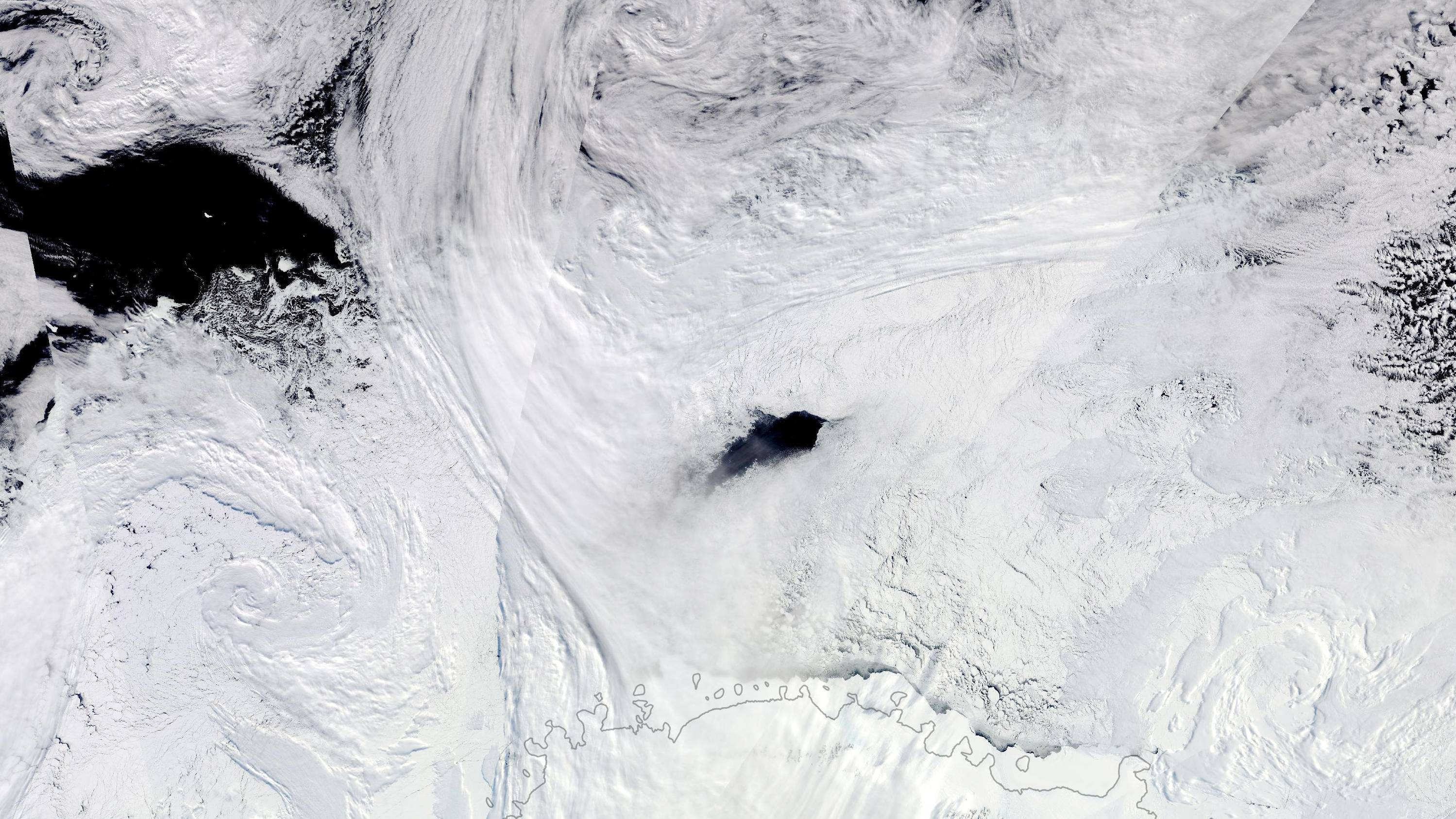A Switzerland-size hole opened in Antarctica's sea ice in 2016-17. Now we know why
The abnormally large 'Maud Rise polynya' has finally been explained.

Each austral winter, Antarctica undergoes a radical change.
Sea ice surrounding the continent expands outward, effectively doubling Antarctica's size. But during the winters of 2016 and 2017, a rare hole called a polynya opened in the middle of the sea ice — one about the size of Switzerland. And scientists have just now figured out how it came to be.
The hole was named the Maud Rise polynya for the seamount, or underwater mountain, located beneath it in the Weddell Sea. According to a new study, it ultimately formed due to a combination of wind, ocean currents and underwater geography that created the perfect salty conditions to melt the sea ice.
Related: Satellites show Antarctic ice shelves have lost 74 trillion tons of water in 25 years
The Maud Rise polynya goes back further than 2016. It was first identified by Earth-sensing satellites in the 1970s, most notably during the winters from 1974 to 1976. Scientists assumed that the polynya would return each winter, but that hasn't been the case — it has only reappeared sporadically, and for brief periods.
"2017 was the first time that we’ve had such a large and long-lived polynya in the Weddell Sea since the 1970s," study leader Aditya Narayanan, a postdoctoral research fellow at the University of Southampton in England, said in a statement.
In 2016 and 2017, the circular ocean current in the Weddell Sea was stronger than usual. As such, upwelling around Maud Rise brought warmer, saltier water closer to the surface.
Get the Space.com Newsletter
Breaking space news, the latest updates on rocket launches, skywatching events and more!
"This upwelling helps to explain how the sea ice might melt. But as sea ice melts, this leads to a freshening of the surface water, which should in turn put a stop to the mixing," study team member Fabien Roquet, a physical oceanography professor at the University of Gothenburg in Sweden, said in the same statement. "So, another process must be happening for the polynya to persist. There must be an additional input of salt from somewhere."
Using data from satellites, autonomous floats and tagged marine mammals, the team determined that turbulent eddies around Maud Rise brought more salt into the area, which was then transferred to the surface through a process called Ekman transport. Through Ekman transport, water moves at a 90-degree angle to the wind above and influences ocean currents.
"The imprint of polynyas can remain in the water for multiple years after they’ve formed," said study team member Sarah Gille, a professor at the University of California, San Diego. "They can change how water moves around and how currents carry heat towards the continent. The dense waters that form here can spread across the global ocean."
The new study was published online today (May 1) in the journal Science Advances.
Join our Space Forums to keep talking space on the latest missions, night sky and more! And if you have a news tip, correction or comment, let us know at: community@space.com.

Space.com contributing writer Stefanie Waldek is a self-taught space nerd and aviation geek who is passionate about all things spaceflight and astronomy. With a background in travel and design journalism, as well as a Bachelor of Arts degree from New York University, she specializes in the budding space tourism industry and Earth-based astrotourism. In her free time, you can find her watching rocket launches or looking up at the stars, wondering what is out there. Learn more about her work at www.stefaniewaldek.com.









